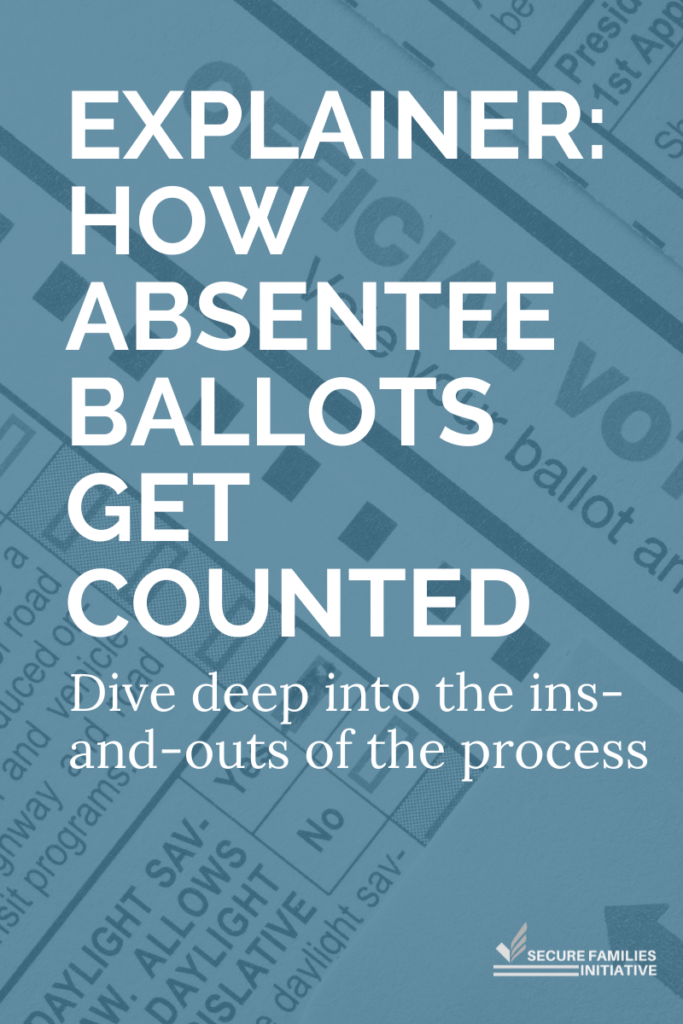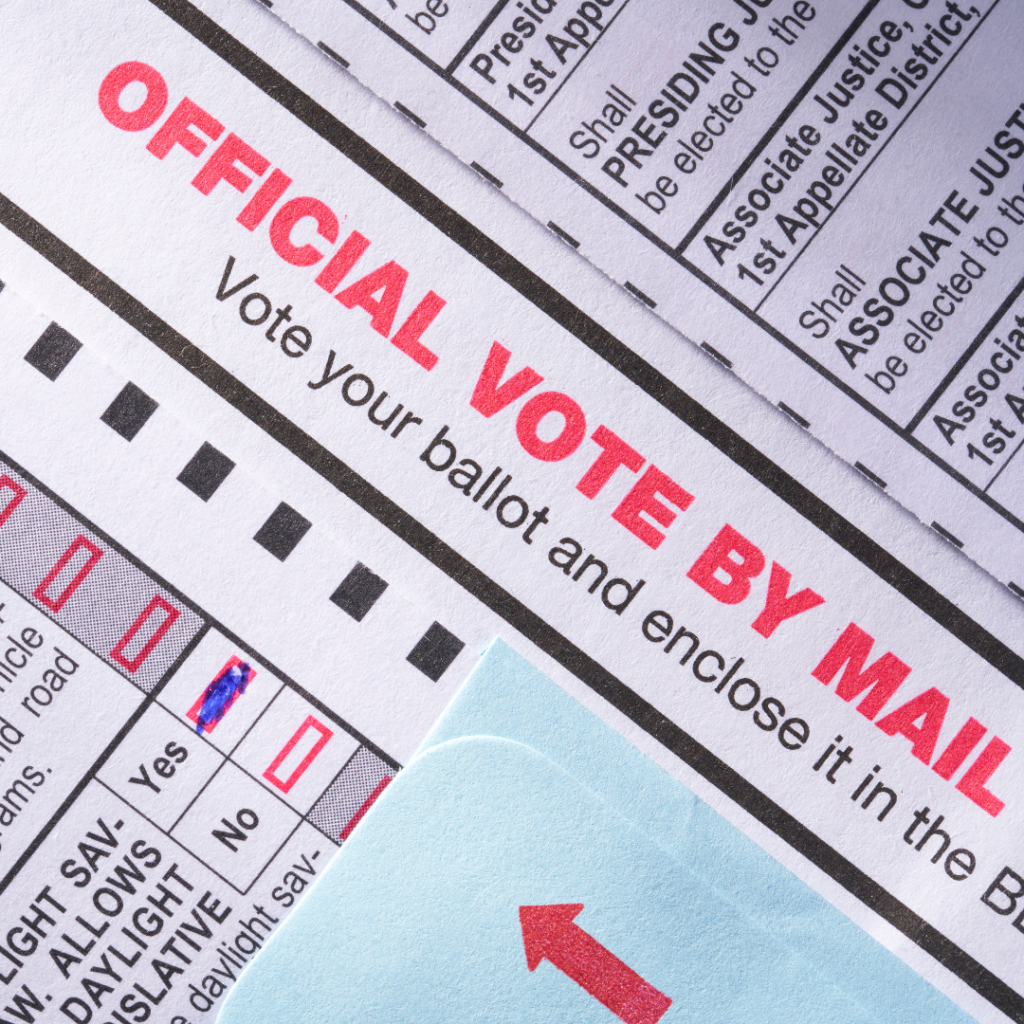In 2020, due to the COVID-19 pandemic, an unprecedented number of Americans cast their ballots through “absentee” methods — from mailing or faxing their ballots, to dropping them off in person.
While this form of voting is familiar to many active-duty military families, it was new for most civilians. A number of questions have been raised about how the absentee ballot counting process works, and how voting is kept secure. In advance of more absentee voting in the 2022 elections, we wanted to talk a moment and dive deep into the ins and outs of this process so folks can feel more confident in their vote.
Note: We understand that terms like “absentee voting,” vote-by-mail,” and “mail-in voting” get tossed around a lot as interchangeable. It’s confusing! We talk about the differences in our voting FAQs post over here, if you’re interested. For the purposes of this blog post, all the information applies to all three.
The Life Cycle of an Absentee Ballot
Whether you’re living abroad or just down the street, let’s say you sent your election office an absentee ballot. What happens?
Step 1: Ballot Gets Verified
Before a ballot can get counted, local election officials must first verify that the ballot is valid. This verification process can include:
- Signature Checks – all 50 states require a valid signature to submit an absentee ballot, though specific “signature match” policies can differ by state.
- Witness Requirements – some states require a ballot to include witness signatures to be considered valid.
Step 2: Ballot Gets Counted
If a ballot passes the verification process, it is then submitted to the counting process. When this happens, the ballot itself is separated from any personally-identifiable information, in order to maintain privacy in voting.
The verification and counting processes for absentee ballots may begin before Election Day, on Election Day, or after in-person polls close. This depends on different state rules.
For more details about the life-cycle of an absentee ballot, visit Ballotpedia here.
Safeguards Against Voter Fraud
Step 1: Ballot Tracking
Each state has a system in place to verify and record ballots in real time as they are received. According to the U.S. Election Assistance Commission, this prevents voters from voting twice. For example, a voter who submitted a ballot by mail will not be able to submit a ballot in person on Election Day, or vice versa.
If a voter requested an absentee ballot, but their absentee ballot isn’t verified and counted by Election Day, that voter may still attempt to vote in person. Ballotopedia explains three options that states usually follow in this situation:
- Allow voters to bring in their absentee ballot. The absentee ballot is then exchanged for an in-person ballot.
- Allow voters to cast a provisional ballot. Later, if the election agency determines that no absentee ballot was cast, then the provisional ballot is counted. If an absentee ballot is received by the appropriate deadline, however, then the absentee ballot is counted and the provisional ballot is discarded.
- Allow a voter to cast a regular in-person ballot. Later, if an absentee ballot is received by the appropriate deadline, then state law may determine that the in-person ballot gets counted instead because it was received first.
Step 2: Voter Rolls
Only eligible voters may cast a ballot. If a voter is not on the voter rolls and tries to cast a ballot, they may be allowed to vote a “provisional ballot.” However, that provisional ballot will only be counted if the election office verifies that the individual is eligible to vote (and has not already voted in that election).
States take careful steps to maintain updated voter lists and cross-check their records with other states, in order to ensure that voters are not casting multiple ballots across state lines. States rely on resources like the Electronic Registration Information Center (ERIC), a nonprofit corporation that is funded and governed by its member states. ERIC enables states to identify voters who have moved, voters who have died, duplicate registrations, and eligible voters who are not yet registered. Through ERIC, states can also request reports of voters who may have previously attempted to vote twice within the same or multiple states, or who have attempted to vote on behalf of a deceased voter in a federal election. As of October 2021, 31 states and the District of Columbia are members of ERIC.
There are several other regional state cooperative agreements that serve a similar purpose as ERIC. States can then report any issues to the U.S. Department of Justice for enforcement.
Volunteer With Your Elections!
The best way to learn more about how elections near you are run is to get involved. SFI lists several ways for volunteers like yourself to help democracy flow and bulk up your civics knowledge along the way.
Read more on this topic
- Vote by Mail 101
- Military Voter Focus Group Results + How They Inform Our Work
- Military Voters Go to Great Lengths to Vote


